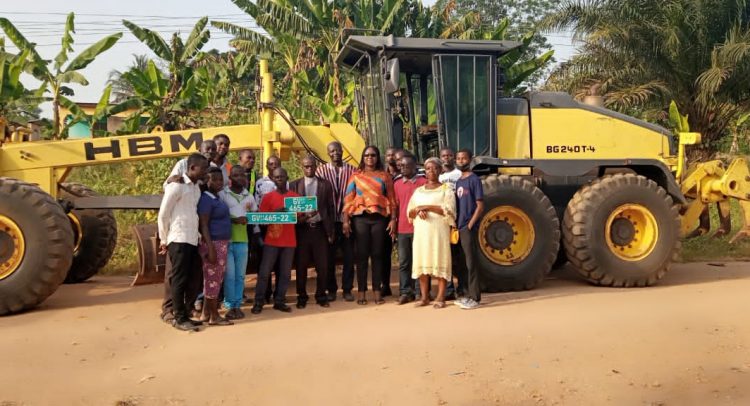The Akufo-Addo-led government has begun the reconstruction of the major roads in the Kraboa/Coaltar in the Ayensuano District of the Eastern Region.
It is also rehabilitating, some of the community roads of about 36 kilometers in the District.
The Ayensuano District was formerly part of the Suhum-Kraboa-Coaltar District where it was created in 1988, and later the southern part of the District was split off to create Ayensuano on 28th June 2012.
Interestingly, the District which has its capital as Coaltar with many villages doesn’t have a single tarred road with bitumen and has poor road networks, making the place unmotorable and impeding economic activities.
However, the current government last year took the steps to tackle some of the major road networks in the District.
The project which is being undertaken by the Government of Ghana and supervised by the Assembly is expected to be completed by the Third Quarter of this year.
The District Chief Executive of the area, Josephine Awuku, who led the contractors to inspect some of the roads over the weekend noted that the entire District had deplorable roads since the creation of the Assembly from the Suhum Municipality.
She said the situation has affected the economic situation of the communities, hence making the assembly struggle to generate revenue to embark on development projects in the area.
She noted that her outfit has managed to get the deplorable roads to be awarded as construction has commenced.
Mrs. Awuku further explained that the major road link from the District capital to Nsawam and Asamankese stretch will be tarred with bitumen before the year ends so that it will be motorable to enhance vehicular movements and thus improve revenue collection and enhance developmental projects.
She added that, thereafter, the roads linked to the big communities in the District will also be rehabilitated.
She urged the residents to rally their support behind the ruling government as the projects commence to be enabled to get done successfully.
The exercise started last year in December and it is still on course.
BY Daniel Bampoe


